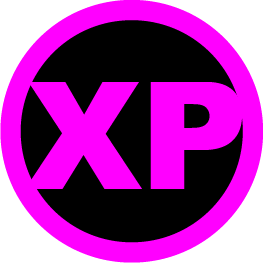About This File
This add-on is a fork of KotorBlender, upgraded to support newer versions of Blender. KotorBlender is in turn based on NeverBlender, forked from version 1.23a.
## Features
- Import & export MDL models, including walkmeshes
- Import & export LYT files
- Import & export PTH files
## Installation
1. Clone this repository or download the latest release of KotorBlender from Deadly Stream
2. If you have cloned the repository, create a ZIP archive containing the **io_scene_kotor** directory
3. From Edit → Preferences → Add-ons in Blender, install the add-on from the ZIP archive and enable it by ticking a box next to "Import-Export: KotorBlender"
4. Alternatively, if you want to contribute to KotorBlender, you may want to create a symbolic link to the local repository in the Blender add-ons directory, typically located at `C:/Users/{user}/AppData/Roaming/Blender Foundation/Blender/{version}/scripts/addons`.
1. `mklink /D io_scene_kotor {repo}/io_scene_kotor`
## Usage
### Data Preparation
Extract models, textures, walkmeshes, LYT and PTH files into a working directory, using a tool of your choice, e.g. reone toolkit. Recommended directory structure:
- *data* — extract all BIF archives here without subdirectories
- *texturepacks*
- *swpc_tex_tpa* — extract swpc_tex_tpa ERF archive here
If you plan to edit textures, batch-convert TPC to TGA / TXI files using **reone toolkit**, although TPC textures are also supported by KotorBlender.
### Model Import and Export
1. Import via File → Import → KotOR Model (.mdl)
2. Select top-level MDL root object to be exported
3. Export via File → Export → KotOR Model (.mdl)
### Editing Animations
To edit list of model animations and corresponding events, select MDL root object and navigate to Object → KotOR Animations. KotorBlender supports both object and armature-based edits. To create an armature from objects, navigate to KotOR Animations → Armature and press Rebuild Armature and Apply Object Keyframes. Before exporting a model, make sure to copy armature keyframes back to objects by pressing Unapply Object Keyframes.
### Lightmapping
1. Select objects for which you want lightmaps to be recreated, or unselect all objects to recreate all lightmaps
2. Press KotOR → Lightmaps → Bake (auto)
UV mapping:
1. Select objects having the same lightmap texture and enter Edit mode
2. For every object, ensure that `UVMap_lm` UV layer is active
3. Select all faces and unwrap UVs via UV → Lightmap Pack, increase Margin to avoid face overlapping
Fine-tuning:
1. Increase lightmap image size via UV Editing → Image → Resize
2. Tweak ambient color via Scene → World → Surface → Color
3. Manually toggle rendering of objects in Outliner and press KotOR → Lightmaps → Bake (manual)
4. In Scene → Render, set Device to GPU Compute to improve performance, set Render Engine to Cycles if not already
5. In Scene → Render → Sampling → Render increase Max Samples to improve quality
### Minimap Rendering
1. Press KotOR → Minimap → Render (auto)
2. Open "Render Result" image in Image Editor and save it as "lbl_map{modulename}.tga"
3. Open "MinimapCoords" text in Text Editor and copy-paste generated properties into module .ARE file using any GFF editor
Fine-tuning:
1. Tweak background color via Scene → World → Surface → Color
2. Manually toggle rendering of objects in Outliner and press KotOR → Minimap → Render (manual)
### Connecting Rooms
1. Select a room walkmesh
2. Enter Edit mode and select two vertices adjacent to another room
3. Determine 0-based index of the other room into the LYT file
4. Enter Vertex Paint mode and set brush color to (0.0, G, 0.0), where G = (200 + room index) / 255
5. Ensure that brush blending mode is set to Mix, and brush strength is set to 1.0
6. Paint over the selected vertices
### Editing Paths
1. Extract PTH file from the module's RIM file, e.g. "modules/danm13_s.rim" (Kotor Tool, reone toolkit, etc.)
2. Import PTH into Blender via File → Import → KotOR Path (.pth)
3. Create/move path points, or modify path connections via Object Properties
4. Export PTH via File → Export → KotOR Path (.pth)
## Compatibility
Known to work with Blender versions ranging from 3.3 to 4.0.
## License
GPL 3.0 or later
What's New in Version 3.10.3
Released
-
Fix automatic node number assignment
- Default node number to -1
- Fix out of bounds access when no node numbers are defined in a model










Recommended Comments
There are no comments to display.